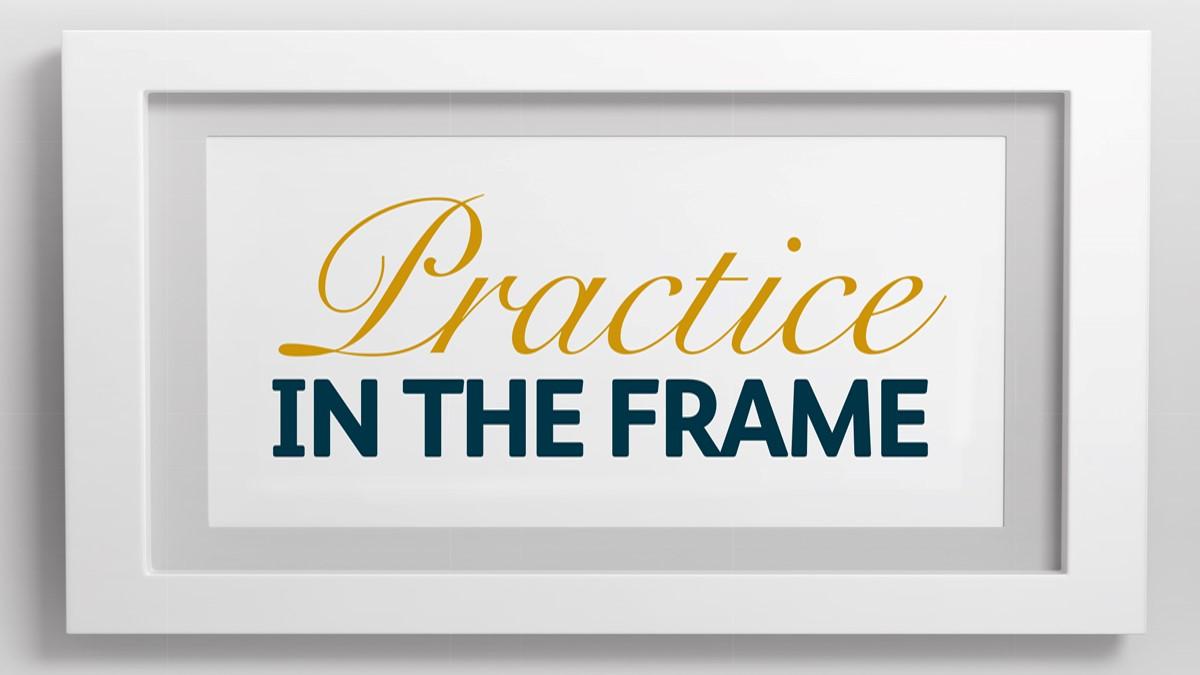How frameworks can enhance, support or develop your practice

We’ve seen a growing number of competency, capability and curriculum frameworks developed over the last decade. Last year alone, frameworks have been published that support first contact MSK physiotherapists, AHPs working with people affected by cancer and health and social care staff working with people living with frailty (due later this year).
Used well, frameworks support the development of practice – enhancing service quality and ensuring the workforce has the behaviours, underlying values, knowledge and skills needed to deliver quality care. As such, frameworks link individuals’ performance to the goals of an organisation. But they can be restrictive if they fail to recognise the complexity, unpredictability and autonomy associated with ‘doing’ professional practice.
Whether you’re developing a framework, giving feedback on one in development or using one in your day-to-day practice – I hope this article will help you think critically about its purpose. It is important to consider the principles that shape design and content. The case study opposite explains how CSP member Lis Ringrose developed a framework to support the training of rehab therapists in China.
Purpose
Frameworks are often developed when practices associated with one profession are taken on by, or delegated to, another group. Given the drive to blur professional boundaries, frameworks are on the rise so it’s important to critique the rationale underpinning them. Does the design facilitate the development of practice? Or is it being used to protect/police professional boundaries by establishing requirements that exclude individuals/groups from being able to perform certain elements?
There are excellent examples of competency frameworks that support delegation or role substitution to support staff or unpaid carers or to enable physiotherapists to take up posts that incorporate activities historically ‘belonging to’ medicine. These frameworks define the expectations of practice. They also provide a structure that supports critical conversations about what’s needed to meet those expectations, and clarity about governance. As well as managing the risks associated with real-world practice, frameworks can also be used to support individuals’ development. How well a framework does this depends on how it defines and describes practice.
Some frameworks recognise that practice is more than just a list
It is also important to consider the practice frameworks are defining/describing. This involves developing a deep understanding of what practice looks and feels like – to the patient, the practitioner and to an outside viewer. Some frameworks reduce practice to a list of technical tasks/activities. While this approach defines and measures the knowledge and skills needed to undertake a specific task/activity, it raises knotty questions. Can autonomous problem-solving practices be reduced to a collection of statements that measure knowledge and skills? Assuming that’s possible, how many times does someone have to perform a task or activity? In what settings? And how long does that competency last if an individual is unable to apply the knowledge and skills on a regular basis?
Other frameworks recognise that practice is more than just a list. They define the required behaviour, values, knowledge and skills and describe how they might be recognised and developed in practice. They recognise that an individual’s scope and confidence is specific to a time and place. This approach enables individuals to critically evaluate the qualities of their everyday practice and demonstrate how these qualities can transfer and be developed in other settings.
Empowering staff in China
Lis Ringrose, an advanced paediatric physiotherapist from Nottinghamshire Healthcare Trust, spent nine years working in China, where she developed a capability framework for Chinese rehabilitation therapists working with children.
Lis saw that the rehabilitation therapists had rich practical expertise but were potentially limited because they hadn’t been exposed to the underpinning theory/reasoning, or supported to become independent learners. The idea came from Lis’s experience of using a framework to support her own development in the UK.
The framework was developed just as physiotherapy was becoming recognised as a profession in China – an ideal opportunity to create a structure/syllabus to empower existing staff to demonstrate their ability to deliver paediatric physiotherapy. The framework needed to fit standards governing physiotherapy practice. The framework was therefore developed with support from the World Confederation for Physical Therapy who were developing the pre-registration physiotherapy curriculum in China at the time, and Grand Valley State University in Michigan, US. For the framework to work in practice, it was important not to come in as ‘the experts’.
The framework, available online in English and Chinese, defines the expectations of practice and describes how an individual can develop the behaviours, values, knowledge and skills needed to deliver paediatric physiotherapy. It has supported staff to become independent learners by offering reflective prompts to help them critically evaluate their practice, evidence their development, identify learning needs associated with their current and future caseload, and develop a plan to meet these needs.
The framework was welcomed by staff and has been embedded into practice in the centre. It informs the recruitment of new staff. By enabling individuals to recognise how knowledge and skills develop and transfer, it provides structure to support both delegation and progression of practice.
The framework has since been adapted to support the development of occupational therapy and speech and language therapy services, and Lis is now looking to embed the framework into practice in the UK.
CPD activity
Use the prompts in the article to critically evaluate a framework that’s relevant to your practice.
- Is the purpose of the framework clearly defined?
- Do the criteria describe how behaviours, knowledge and skills transfer from one setting to another?
- How is the framework used to support the development of you and your practice?
Based on this evaluation, think about the development of your practice
- What do you want to change and why?
- Who will help you make that change?
Author: Nina Paterson, CSP education adviser
Number of subscribers: 1




































